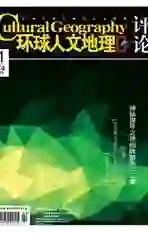On Chinese Dish Names Translation from the Perspective of Cultural Differences
2014-12-08迟钰丽
迟钰丽
1、Introduction
As an essential prerequisite for existence, whether in ancient times or in modern times, and whether in the East or in the West, food plays an indispensable role in the development of society, and in the progress of human beings. Chinese cuisine culture plays a highly significant role in Chinese culture. It can be easily found that many collections of Chinese cook books on bookshelves, but seldom can we research books on Chinese food which is written in English. According to cultural translation theory, the aim of this thesis is to explore a systematic method of English translation for Chinese dish names from the cultural perspective.
2、Cultural Differences between Chinese and Western Dish
2.1 Differences in food materials
Chinese people have a wide interest in eating, so they use more kinds of raw materials in cooking compared with Westerners. There is a saying that things in the air except plane, things in the water except submarines and things with four legs except benches are all Chinese peoples food. This saying is not totally the reality but not far away from the truth (Du, 2006: 96). In the aspect of eating, Westerners lack the spirit of exploration. They treat every food they do not know cautiously. It was said that when tomatoes were first transferred from Arab to the West, no one dared to eat them. Westerners have a narrow range of food. Westerners seldom eat pork, and they never eat rare organs, which can be made into delicious food in China.
2.2 Differences in dietary patterns
In the western countries, westerners may enjoy the dinner elegantly with food on their own plates. They would like to dine at elegant environment. There is a downy piano, peaceful light and good-mannered waiters. Therefore, they arent allowed to make too much noise so that diners had better put down their knives and forks scrupulously and not talk loudly. Meanwhile, speaking with mouth full is also inappropriately(Chen, 1999: 134).
While in China, people like to have dinner among a lot of people, such as their family members or closely friends and their colleagues. That exactly reflects that they prefer to have a jolly time. During Chinese dining, there are a lot of items to entertain diners.
3、Strategies for Translating Chinese Dish Names
3.1 Naming with major ingredients
a. Introduce the main ingredient and secondary ingredient
Formula: main ingredient (name/shape) and with and secondary ingredient, such as杏仁鸡丁 Beef with Bean Curd;白灵菇扣鸭掌 Mushrooms with Duck Feet.
b. Introduce the main ingredient and sauce
Formula: main ingredient and with/in and sauce, such as冰梅凉瓜 Bitter Melon in Plum Sauce; 芥末鸭掌 Duck Webs with Mustard Sauce.
3.2 Naming with cooking methods
a. Introduce the cooking method and main ingredient
Formula: cooking method and main ingredient, such as火爆腰花 Sautéed Pigs Kidney;软炸里脊 Soft-fried Pork Fillet.
b. Introduce the cooking method and main ingredient and secondary ingredient
Formula: cooking method and main ingredient and secondary ingredient ,such as地瓜烧肉 Braised Chicken Fillet with Tender Ginger.
3.3 Naming with the shape or taste
a. Introduce the shape (taste), main ingredient and secondary ingredient
Formula: shape (taste) and main ingredient and (with) secondary ingredient, such as 芝麻酥鸡 Sliced Chicken with Seasonal Vegetables ; 脆皮鸡 Crispy Chicken.
b. Introduce the cooking method, taste, and main ingredient
Formula: taste and cooking method and main ingredient , such as香煎鸡块 Fragrant Fried Chicken; 水煮嫩鱼 Tender Stewed Fish.
3.4 Naming with people s name or place name
a. Introduce the dishs founder and main ingredient
Formula: peoples name and main ingredient, such as麻婆豆腐 Ma Po Tofu (Ma Po Bean curd) ;广东点心 Cantonese Dim Sum.
b. Introduce the dishs founder, cooking method and main ingredient
Formula: peoples name and cooking method and main ingredient ; 东坡煨肘 Dong Po Stewed Pork Joint ; 北京烤鸭 Beijing Roast Duck.
4、Conclusion
With the progress of globalization, Chinese cultures and Western cultures are reconciling gradually. Now lots of western foods such as, hamburger and sandwich have entered into Chinese markets. These two cultures are improving in the process of conflicting. In conclusion, the aim of research into dish names translation can be achieved by enhancing bilingual competence and intercultural communication awareness, by enriching the knowledge of translation theories and skills, and by being familiar with the dietetic cultural differences between China and the west.
References
[1] Bassnet, Susan & Lefeveve. Constructing Cultures Essays on Literary Translation [M]. Shanghai: Shanghai Foreign Language Education Press, 2002.
[2] Bender, David. An Oxford Dictionary of Food and Nutrition [M]. England: Oxford University Press, 2009.
[3] 陈丕錝.汉英餐饮词典[M].上海:上海译文出版社,1995.
[4] 陈嘉.餐旅业英汉名词组撰编[J].北京:华联出版社,1999.
[5] 杜莉,孙俊秀.西方饮食文化[M].北京:中国轻工业出版社,2006.
